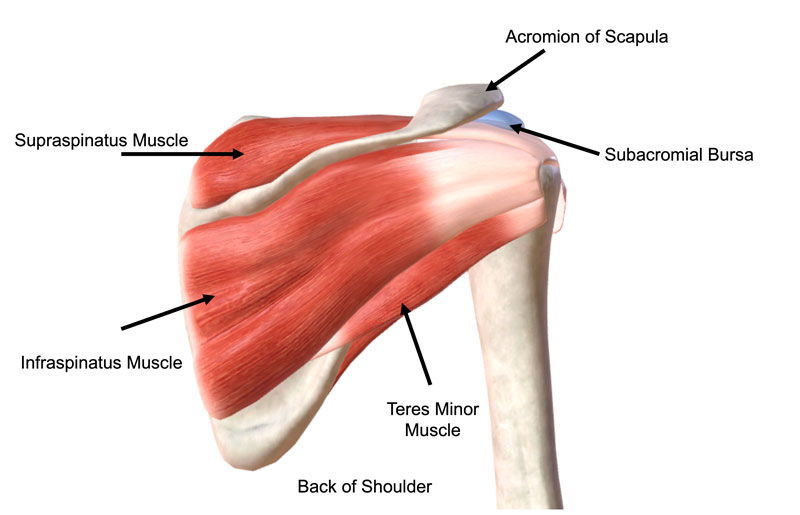Shoulder Impingement – Subacromial Bursitis
What is shoulder impingement?
Shoulder Impingement Syndrome Treatment
Shoulder Impingement is a painful condition that is caused by squeezing or rubbing of the rotator cuff tendons in the space between the ball of the upper arm bone (humeral head) and the tip of the shoulder (acromion). When the tendons are compressed in the space, or squeezed on movement, the subacromial bursa, which is a fluid-filled sac, becomes inflamed and this leads to pain.
Shoulder impingement is one of the most common conditions I treat
What causes Shoulder Impingement?
Poor posture is a major contributor in shoulder impingement. If you spend hours sitting at a desk, hunched over staring at a computer screen, your muscles aren’t in the best position to work properly, and this puts extra stress on them, leading to pain.
Repetitive overhead activities (such as swimming, tennis and weightlifting) continuously load the rotator cuff tendons, particularly if your technique isn’t great, or if you have poor control of your shoulder girdle.
Sometimes, our individual anatomy means we may be predisposed to shoulder impingement because of the angle of the end of the acromion. Wear and tear within the joint above the rotator cuff tendons (the acromioclavicular joint) can also create rubbing or compression on the tendons.
What are the symptoms of Shoulder Impingement?
Shoulder impingement affects people in different ways, but commonly, you might experience pain down the side of you shoulder (and perhaps into your upper arm).
You might have pain when reaching your arm up over your head or away from your side.
You might have pain at night if you lie on that side, and you’ll probably find that overhead activities, such as serving in tennis, becomes really difficult. You might even find yourself avoiding giving your loved-ones a hug as it causes too much pain.
Some patients tell me that they struggle with putting a coat on comfortably, or if they suddenly jar their shoulder (e.g. when catching a heavy door that’s closing), it can be really painful and brings tears to their eyes.
How is Shoulder Impingement diagnosed?
When you come to clinic, I’ll be asking you lots of questions about your symptoms, how they are affecting you, and what’s important to you when it comes to being active. I might ask you about your sports, your technique, and what you may have tried in terms of treatment.
I’ll examine you, watching carefully how you move, and I may then recommend an MRI scan or ultrasound scan, to look at the structure of your shoulder joint and the soft tissues.
How is Shoulder Impingement treated?
If your shoulder is really painful, whilst we’re getting you better, you may need to temporarily adapt the activities that particularly aggravate your shoulder.
Most people with shoulder impingement will improve with good physiotherapy or osteopathy, but it’s important to see a therapist who really understands good shoulder movement and has particular expertise in shoulders.
Sometimes an ultrasound guided corticosteroid injection (to bathe the bursa) is needed to reduce the inflammation and pain, so that rehab can be more effective.
The right injection at the right time can restore your activity with very few risks.
Will my shoulder need surgery?
I always try to exhaust all non-operative options first but sometimes, despite excellent therapy, we may need to consider the option of surgery. It’s important to approach surgery with the right mindset. You need to be clear that having tried everything else, it’s the right decision for you, and for your lifestyle going forwards.
Shoulder Impingement Surgery (subacromial decompression).
Post surgery FAQ
Ms Susan Alexander is a senior orthopaedic surgeon and is recognised by all the UK’s major insurers.









